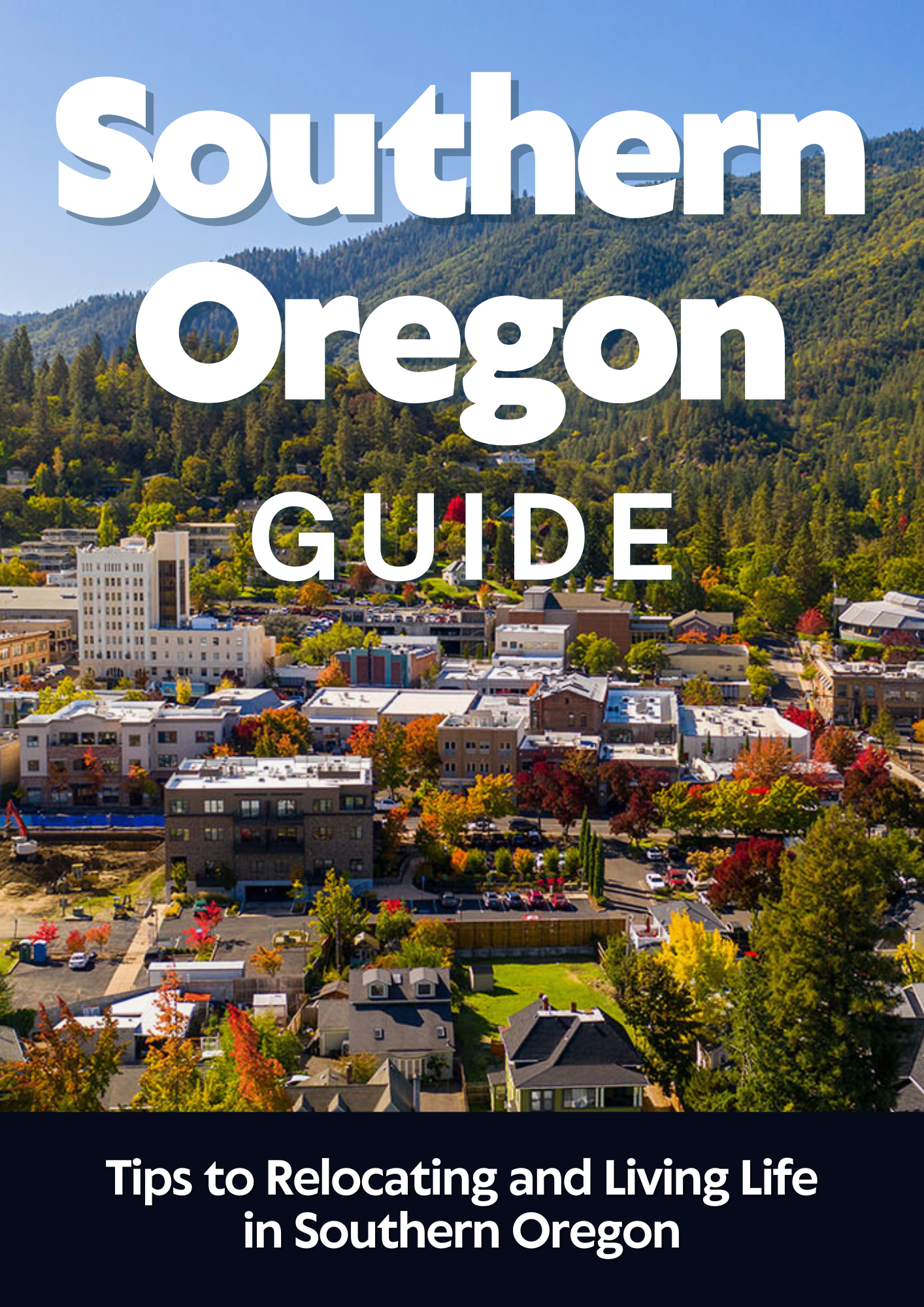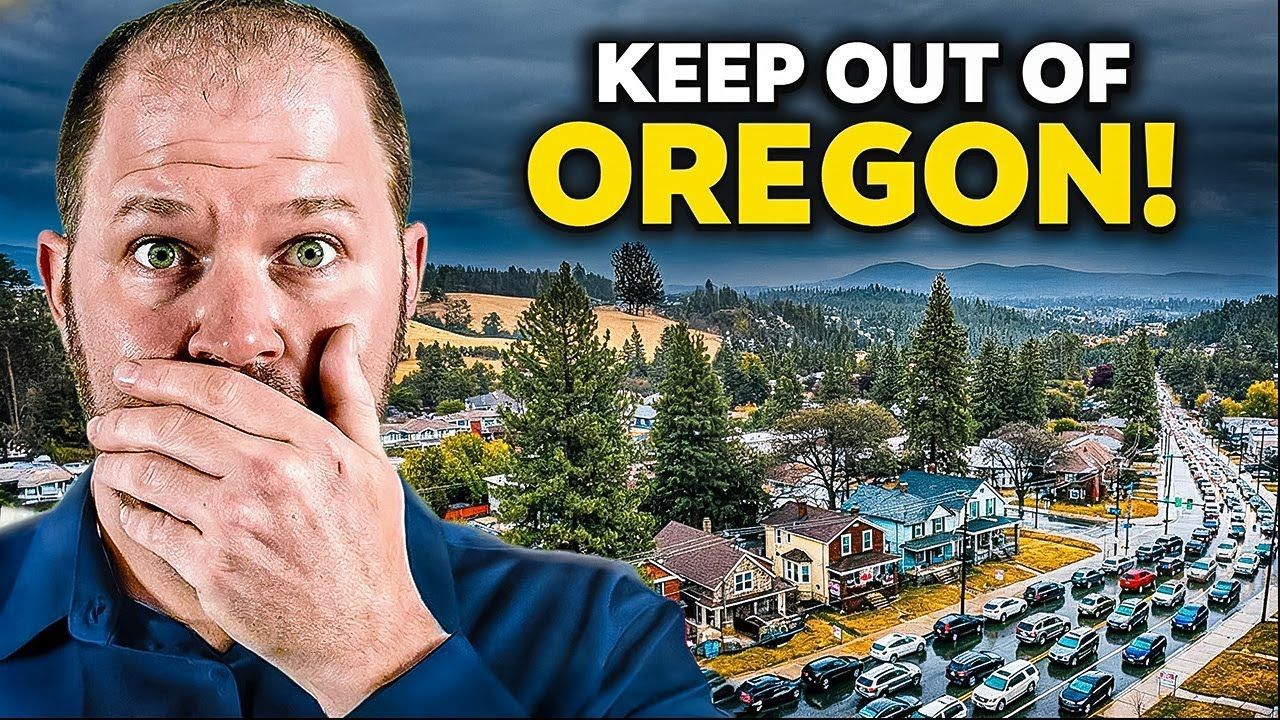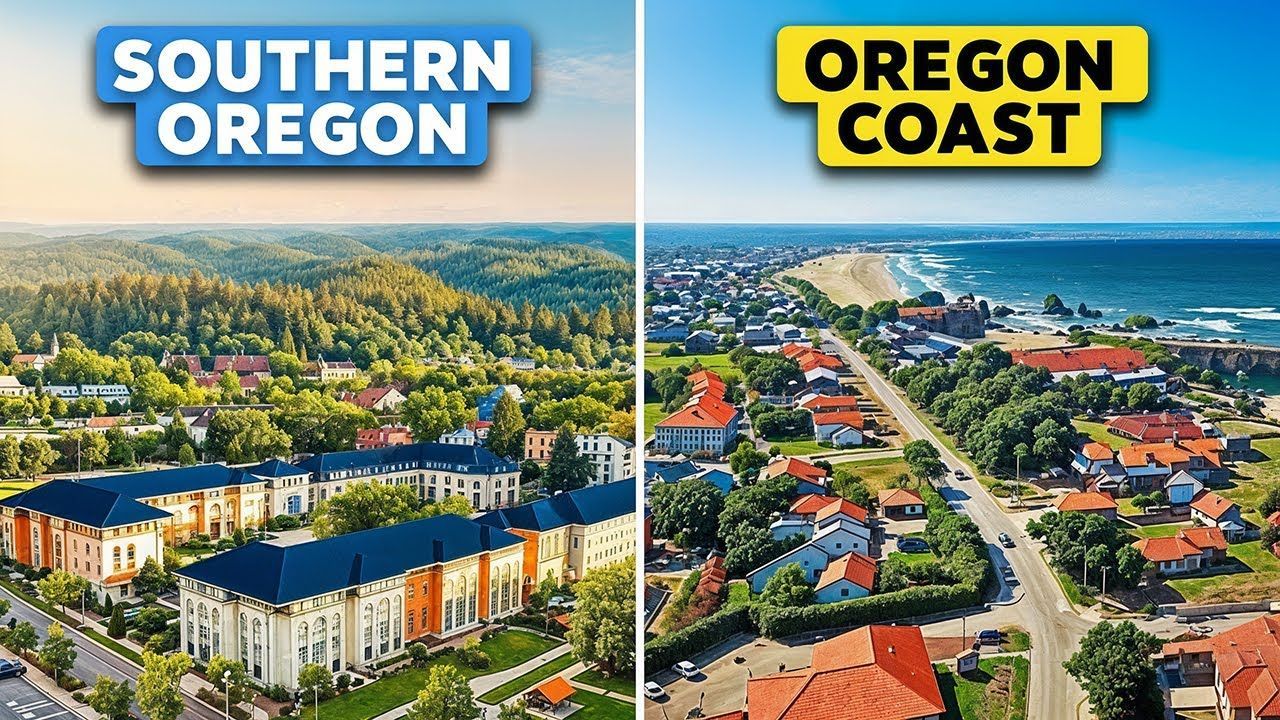You WON'T BELIEVE Where Oregon HOME BUYERS Are Moving From!!
I'm Brian Simmons with Buying Southern Oregon, and over the last several years I've helped hundreds of families with moving to Southern Oregon — especially those who end up choosing Southern Oregon. In this guide I’ll walk you through where people are leaving, why they're leaving, and why Southern Oregon keeps winning as the relocation destination of choice. I'll share the numbers, the real-world trends, boots-on-the-ground examples from my clients, and practical steps if you're considering moving to Southern Oregon yourself.
Table of Contents
- Introduction
- Spot #1: Portland Metro Area
- Spot #2: Willamette Valley
- Spot #3: Oregon Coast
- Why Are People Leaving These Areas?
- Why Southern Oregon? (Why People Choose to Move to Oregon's Southern Region)
- Real-world, Boots-on-the-ground Perspective
- Common Mistakes to Avoid When Moving to Oregon
- Action Plan if You’re Considering Moving to Oregon (Southern Oregon Focus)
- FAQs About Why People Are Moving to Southern Oregon
- Conclusion — is Moving to Oregon Right for You?
Introduction
If you’ve been keeping an eye on Oregon’s housing trends, you’ve probably noticed something interesting—people aren’t just moving into the big cities anymore. In fact, more and more homebuyers are leaving some of Oregon’s most popular areas behind. Rising prices, lifestyle changes, and even the weather are pushing families, retirees, and young professionals to rethink where they want to live. And for many, the answer has been no—it’s time for a change. So let’s take a closer look at the parts of Oregon people are leaving behind, and why those moves are happening in such big numbers.
Spot #1: Portland Metro Area
One of the biggest exoduses we've seen is out of the Portland metro area. Multnomah County has lost nearly 27,000 residents between 2020 and 2023 — about a 3% decrease. People are leaving for many reasons: cost, politics, lifestyle, and a search for better weather or convenience. If you're moving to Southern Oregon and you came from Portland, you're not alone — a large percentage of people relocating within the state are trading the Portland metro hustle for quieter towns in Southern Oregon.

Spot #2: Willamette Valley
The Willamette Valley — stretching from Eugene up to Portland — includes cities like Corvallis, Salem, Albany, and the Portland suburbs such as Beaverton and Hillsboro. This region has seen significant out-migration as well. If you're thinking about moving to Southern Oregon from a Willamette Valley city, you should know that many folks are opting for less rain, more sunshine, and lower housing costs in the south.
Spot #3: Oregon Coast
The Oregon coast can feel like a dream: ocean breezes, artsy towns, and cool nights. But many retirees and would-be coast dwellers decide the coastal lifestyle isn't sustainable full-time. Remoteness, long winding drives to hospitals and airports, and heavy rain push people inland. For a lot of people moving to Southern Oregon, the coast becomes a vacation spot rather than a permanent home.
Why Are People Leaving These Areas?
There isn't a single cause — it's a combination of convenience, cost of living, politics, weather, and the pace of life. If you're moving to Southern Oregon, understanding these local drivers will help you pick the right community rather than simply chasing a price or an image on the internet.
Convenience
Remote coastal towns are beautiful but often impractical for full-time living. A resident in Brookings, for example, may face a 2–2.5 hour drive on winding roads to reach critical services in Medford or Grants Pass. When you’re deciding on moving to Southern Oregon, factor in travel time to hospitals, airports, and major shopping. That convenience question shows up again and again in client conversations.
Cost of living and housing challenges
The cost of living is a top driver. People priced out of the Portland suburbs — Beaverton, Wilsonville, Tigard, Lake Oswego — look elsewhere. Downtown Portland’s median home price might look reasonable (around $600,000), but the suburbs and family-oriented neighborhoods can be far more expensive. When you're moving to Southern Oregon, remember that sticker prices don't tell the full story: property taxes, commute costs, and insurance all factor in.
Politics and local government
Politics and local governance have also influenced migration. Many former residents say Portland isn’t the city they remember — they cite downtown changes, public safety concerns, and businesses relocating out of downtown. Whether you agree politically or not, the economic and practical outcomes (closed stores, lower commercial values) are real considerations for people moving to Southern Oregon from larger metro areas.

Weather
Weather is a decisive factor for many people moving to Southern Oregon. The Oregon coast and Willamette Valley are known for long stretches of gray, drizzly weather. Data tells the story: many coastal areas see over 150 rainy days per year and can receive 100+ inches of rain depending on location. The Willamette Valley averages about 45 inches of rain per year, with roughly 150 rainy days. Southern Oregon, by comparison, averages about 25 inches of rain and fewer than 100 rainy days a year — which is a massive difference in daily life.
Lifestyle and pace
Urban fatigue after years of congested commutes and a fast pace is pushing people to slower, recreation-oriented lifestyles. Many who are moving to Southern Oregon want to be closer to national forests, rivers like the Rogue, and activities like hiking, rafting, fishing, skiing, and biking — all things Southern Oregon delivers without the long drives you might face from more remote coastal towns.
Why Southern Oregon? (Why People Choose to Move to Oregon's Southern Region)
If you’re moving to Southern Oregon and narrowing your search, Southern Oregon keeps coming up for good reasons: a favorable climate, value and space, community feel, accessibility to recreation, and an overall balance of modern amenities and small-town charm.
Climate
Southern Oregon averages over 200 days of sunshine per year — far above both the coast and the Willamette Valley norms. Central Oregon cities like Bend receive even more sun, but Bend’s winters bring heavy snowfall and very cold temperatures. Southern Oregon’s climate strikes a comfortable balance: plenty of sun, mild winters, and outdoor-friendly seasons that let golfers and hikers enjoy the area nearly year round. If weather is a major reason you’re moving to Southern Oregon, the Rogue Valley should be on your shortlist.
Space and value
Housing affordability and space matter. Southern Oregon’s median home price sits around $450,000, roughly 15–20% lower in overall cost of living compared to higher-priced markets. That means many buyers can get a turnkey home, new builds in some areas, or even acreage — all for less than they’d pay in the suburbs of Portland or in markets like Bend. For many clients I’ve worked with, that dollar stretch is a game changer when moving to Southern Oregon.
Community
Southern Oregon is a community-first region. With roughly 300,000 people across Jackson and Josephine counties, you’ll find neighborhoods where the butcher or barista knows your name. That small-town feel — friendly faces, community events, and the kind of local service that remembers your family — is a major reason people moving to Southern Oregon choose this corner of the state.
Recreation
From the Rogue River to Mount Ashland, the recreational options are endless. You can raft, fish for trophy salmon and trout, hunt big game, hike mountain trails, ski in winter, and enjoy world-class wineries. These amenities are often a short drive away — not a multi-hour commitment — and that accessibility makes Southern Oregon attractive for people moving to Southern Oregon for lifestyle reasons.

Balance
Ultimately, Southern Oregon offers balance: good healthcare, an international airport nearby, a good economy, cultural touchstones (Ashland’s arts scene is nationally recognized), and affordability. It’s not the flashiest market, but for many people moving to Southern Oregon it's precisely that balance that makes life sustainable and enjoyable long term.
Real-world, Boots-on-the-ground Perspective
Here are the lessons I’ve learned from helping dozens of clients relocate: practical, tactical, and sometimes surprising.
Visit first—often
Most people I work with visit Southern Oregon at least once — often multiple times — before making the move. The town you think you want (Eagle Point, Central Point, Medford, Jacksonville, Grants Pass) may shift once you experience each community. When moving to Southern Oregon, boots-on-the-ground visits are invaluable: different towns have unique personalities and amenities that you can’t fully appreciate online.
Google Maps vs. reality
Drive times, noise, privacy, and local vibe can feel very different in person. Roads that look short on a map might be slower or bumpier. Neighborhoods that appear quiet at noon might be bustling during evenings. That’s why I recommend actually living the day-to-day for a short trial before you commit.
Who’s moving here
The wave of new residents includes retirees, remote workers, young families, and folks with school-age children. The common thread is a priority on quality of life more than square footage or high-end finishes. If you’re moving to Southern Oregon because you value a slower pace, outdoor access, and community, Southern Oregon is often a great fit.
Schools and healthcare matter
Families and retirees often ask about schools and healthcare — and rightfully so. Some areas in Southern Oregon have excellent access to hospitals and schools; other pockets are more rural with fewer immediate services. If you’re moving to Southern Oregon with specific needs, pick towns with the right access rather than assuming every small town offers the same level of service.
Expect competition — homes can sell fast
Even in smaller towns, desirable pockets move quickly. If you’re serious about moving to Southern Oregon, be ready to act: have financing pre-approved, know your priorities, and be flexible on timing or exact location. That flexibility often determines whether you land your ideal home.
Try a lifestyle trial run
Many of our clients rent an Airbnb or short-term rental for a few weeks or a month to see what daily life is like. Grocery trips, hikes, local coffee shops, and routine errands give you a realistic feel for a place. This tiny investment often saves big headaches later on and is one of the smartest steps if you’re moving to Southern Oregon from another region.
Housing variety is huge
Southern Oregon offers everything from downtown historic cottages to riverfront estates to acreage properties. Your initial wish list may change — some folks start wanting walkable communities with pickleball courts and end up craving privacy and land. The key when moving to Southern Oregon is to keep an open mind and consider several towns that meet your top priorities.
Common Mistakes to Avoid When Moving to Oregon
- Choosing a town solely by price. (Lower cost may mean fewer services.)
- Skipping a visit and buying sight-unseen without a trial run.
- Assuming all “small towns” are the same — they’re not.
- Ignoring commute and access to healthcare until after purchase.
- Underestimating local competition and not getting financing lined up early.
Action Plan if You’re Considering Moving to Oregon (Southern Oregon Focus)
- List priority needs (healthcare, schools, recreation, commute).
- Pick 2–3 towns that match your needs and schedule a short visit or trial stay.
- Research local real estate inventory and typical sale timelines.
- Get pre-approved with a lender who knows the area.
- Work with an agent who understands each town’s personality — neighborhoods matter.
- Complete your lifestyle trial run: grocery, library, healthcare, and weekend recreation.
- Make a plan for timing your sale/purchase to reduce overlap stress.
FAQs About Why People Are Moving to Southern Oregon
Is moving to Southern Oregon expensive?
It depends where you move from and where in Oregon you land. Compared to Portland and Bend, Southern Oregon generally offers more affordability — median home prices here have been around $450,000 and overall cost of living roughly 15–20% lower. If you're moving to Southern Oregon from a high-cost metro, Southern Oregon often stretches your dollar further.
How many rainy days will I get if I move to Oregon?
It’s highly regional. The coast and Willamette Valley can see about 150 rainy days per year; the coast can get very high annual rainfall (some spots 100+ inches). Southern Oregon averages roughly 25 inches of rain and under 100 rainy days. If rain matters in your moving decision, Southern Oregon is notably drier and sunnier than the coast.
Are there jobs if I’m moving to Southern Oregon and not retired?
Southern Oregon has a diversified economy: healthcare, manufacturing, tourism, and remote work are all common. Many newcomers are remote workers who bring income from outside the region. When moving to Southern Oregon, research local job markets in your field, or plan for remote work connectivity and local networking.
What towns are best for families?
Towns with strong school districts and nearby healthcare tend to be preferred by families. In Southern Oregon, communities like Central Point, Ashland, and certain parts of Medford often rank highly for family-friendly amenities. Your agent can help match schools, commute times, and neighborhood types to your family’s needs.
Should I rent first or buy immediately when moving to Southern Oregon?
Renting (or a short-term lifestyle trial) is a smart move for many. It reduces buyer’s remorse and gives you a clearer picture of daily life. However, if the market is hot and you’ve done your homework, buying can also make sense — especially if you have a contingency plan and financing lined up.
Conclusion — is Moving to Oregon Right for You?
moving to Southern Oregon is a big decision, and the state offers wildly different lifestyles across its regions. If you’re chasing sun, affordable homes, outdoor recreation just minutes from your door, and genuine community, Southern Oregon is worth a hard look. Over and over, clients tell me they came for the weather or the cost, but stayed for the people.
If you're considering moving to Southern Oregon and want a practical playbook specific to Southern Oregon — including the best towns for your budget, commute times, local schools, and what life looks like year-round — download my FREE Southern Oregon Relocation Guide . It includes the information I wish every new client had before they visited: town-by-town breakdowns, tips for a successful trial run, and common pitfalls to avoid.
Ready to talk specifics about moving to Southern Oregon? Call or text me at 541-954-7758, schedule a tour, or let’s plan your lifestyle trial. I’m here to help you find the Southern Oregon town that fits your life, not just your budget.

Buying Southern Oregon
At Buying Southern Oregon, we are a dynamic team dedicated to helping you achieve your real estate goals. Combining Brian Simmons’ deep market expertise and Josh Berman’s strong negotiation skills, we provide personalized service and local knowledge to ensure a seamless and rewarding experience. Whether you’re buying, selling, or relocating, we’re here to guide you every step of the way and make your Southern Oregon real estate journey a success.













